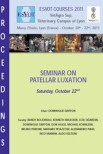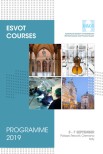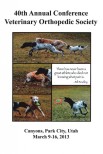The abstract sentence “strain was significantly, incrementally, higher as working length was extended” remains true. Strain was higher in the long working length (LWL) constructs than the short (SWL) and medium working length (MWL) constructs. Higher measured strain at a longer working length in our study can be described as a direct relationship. We specifically used the term incremental in our results to highlight that we have measured at three distinct working lengths and have not made inferences about strain assessment between these measured working lengths.
We selected the axial plate region between the central screw holes of the 3.5-mm LCP as the area of interest for surface strain assessment as this represented a consistent region across all working lengths and allowed for relative comparison. The application of flexure formula theory to this region of the plate in isolation is flawed. Flexure formula is true for a uniform beam and would be true if the plate alone was subjected to a bending moment. The term constructs used in our study describes the combined bone model, screws, plates, and loading apparatus, and therefore has the biomechanical properties of a composite beam. The bending stiffness of a composite beam is influenced by the combined area moment of inertia of the materials, their modulus of elasticity, and the mechanical connection between the beams.[1] A composite beam of bone and bone plate (i.e., Delrin rod + bone plate in our study) is stiffer than a bone plate alone. The stiffness of such a composite beam in a fracture-gap model is dependent on how much of the construct is combined plate and Delrin, and how much is plate alone. The long working length constructs therefore had shorter regions of combined plate and Delrin and a longer region of plate alone resulting in a less stiff construct. The less stiff construct deformed more under the constant bending moment applied through four-point bending and, as such, measured strain was higher, as would be expected.[2] [3] [4] [5] [6] Higher strain, and by inference stress, in LWL constructs is supported by shorter fatigue life in longer working length constructs.[2] [7] Based on this reasoning and the results of our biomechanical testing, we accepted our second research hypothesis that strain would be higher as working length was extended.









